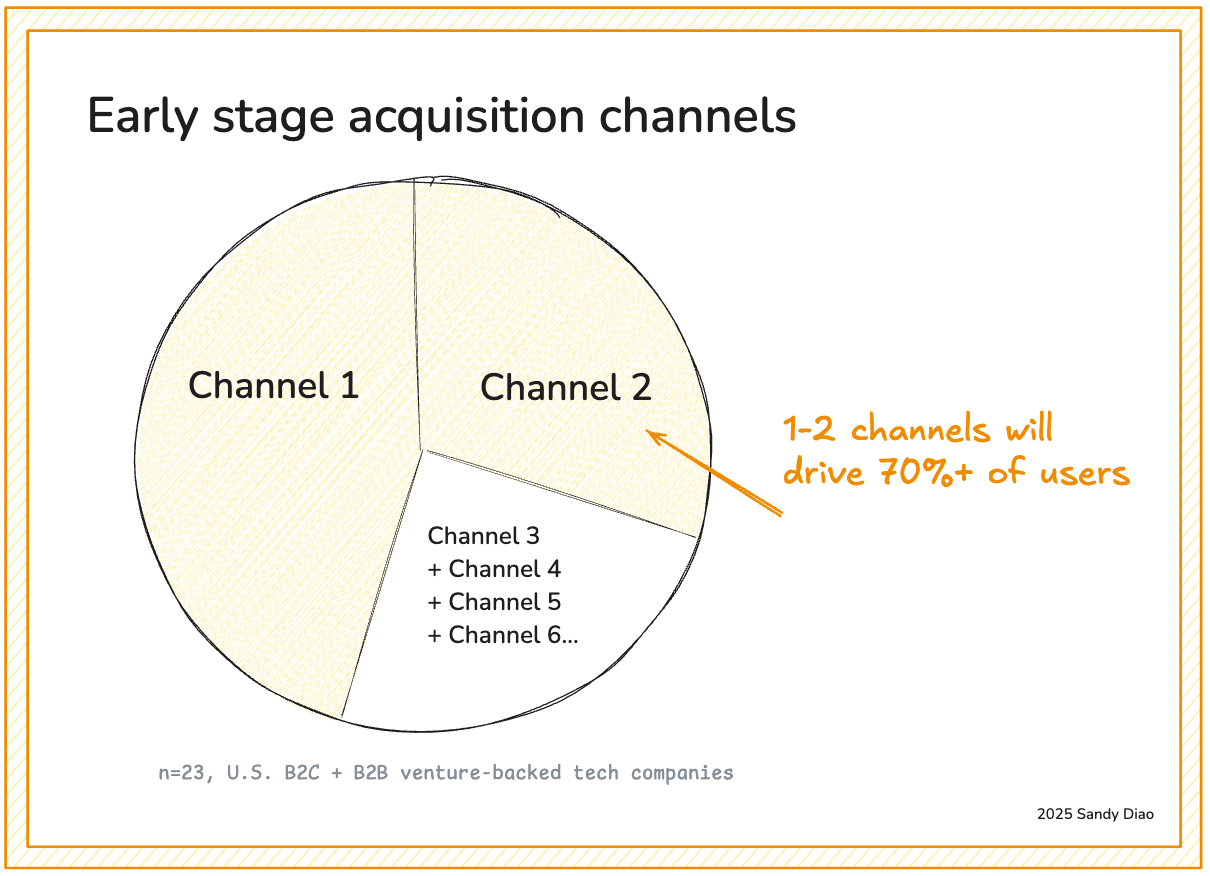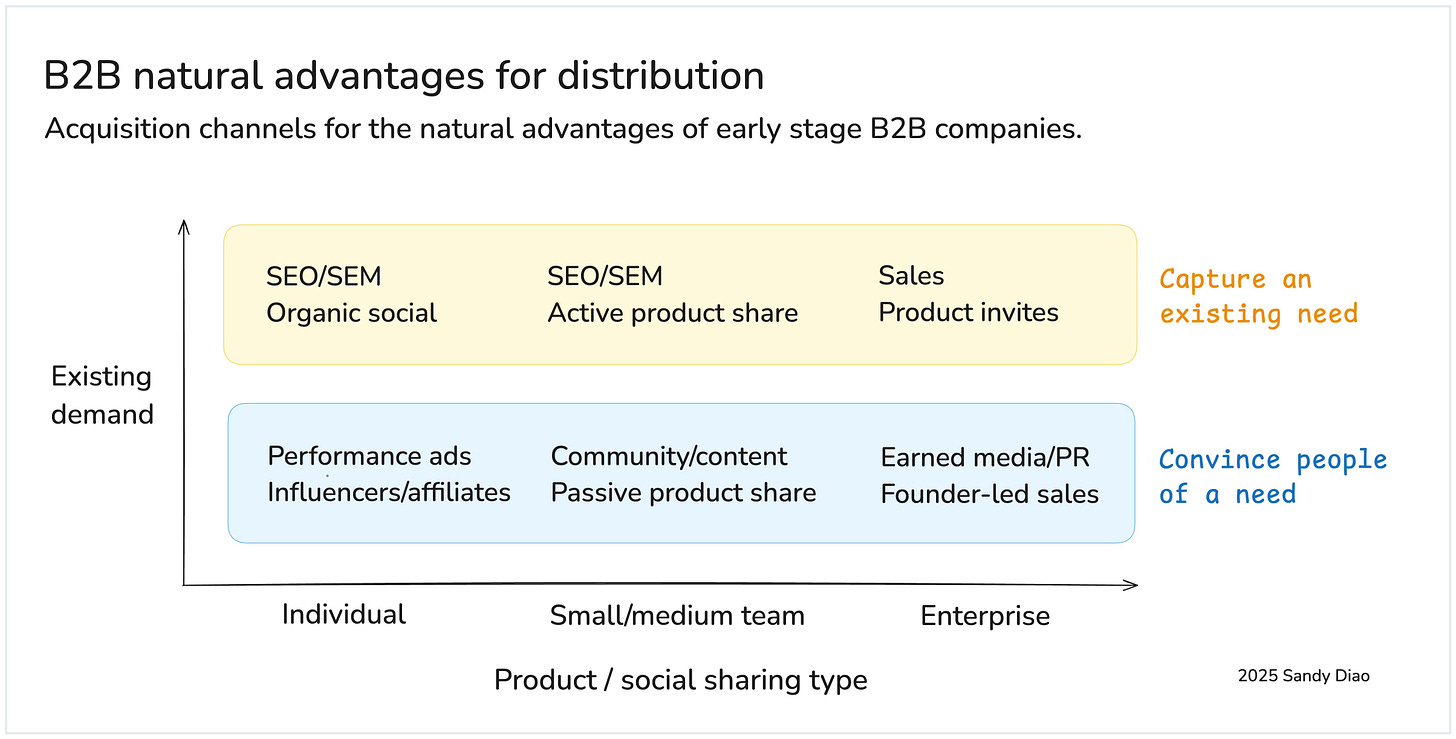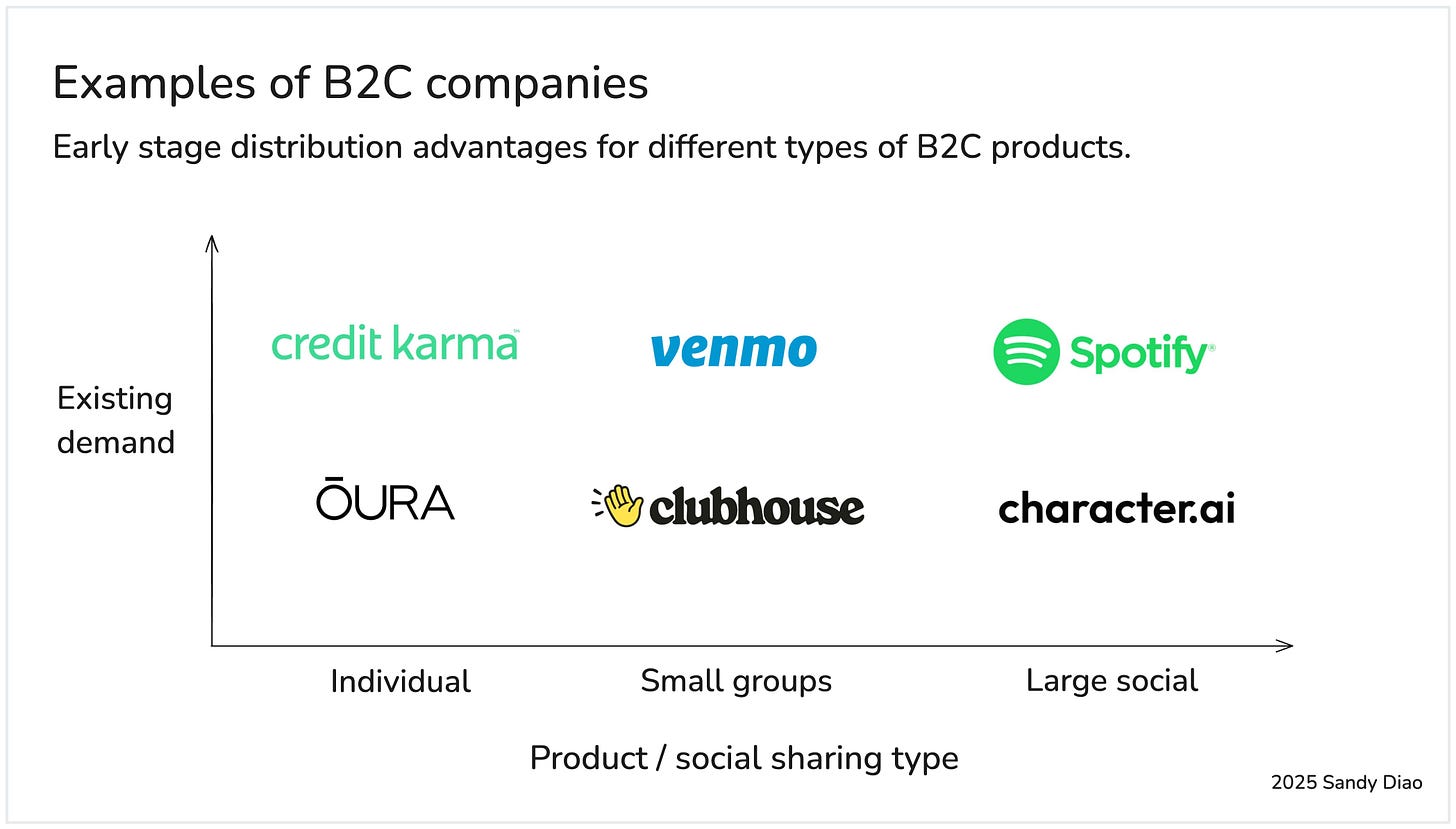The definitive framework to find your next scalable user acquisition channel
Proven frameworks from leading growth teams at Pinterest, Meta and Descript
👋 Hi, it’s Kyle Poyar and welcome to Growth Unhinged, my weekly newsletter exploring the hidden playbooks behind the fastest-growing startups.
Up today: full-stack growth leader Sandy Diao — of Pinterest, Meta and Descript — brings us the definitive framework to find your next scalable user acquisition channel. And read the entire piece to find a fantastic application of Claude to generate Meta ads copy 😉
Want to go deeper? Check out Sandy’s Maven course on scalable user acquisition and get $100 off as a Growth Unhinged subscriber. (See all my favorite Maven growth courses here.)
One of the biggest mistakes that early-stage growth teams make is spreading themselves too thin across too many user acquisition channels. After leading growth teams for 12 years at some of the fastest growing companies like Pinterest, Meta, Descript, and Limitless AI, and advising startups backed by top investors like a16z, Sequoia, and Goodwater Capital, I’ve seen this pattern play out. Yet early stage companies will struggle to identify the right channel early and waste valuable time and budget on channels that are a poor fit.
So, I’ve developed a framework to help you shortcut that process. I’ll show you how to:
Quickly understand your products' built-in acquisition advantages.
Find 1-2 scalable acquisition channels that fit those strengths.
Get real, investable results quickly and cheaply.
Bookmark this post and revisit it anytime you hit a block, whether you’re brainstorming user acquisition channel ideas, planning your growth roadmap, or refining your product growth strategy.
Finding product-channel fit.
You know you need to find product-market fit – how your product fits the needs of your target customer. But your product also fits the nature of specific types of acquisition channels. These are the power acquisition channels for your company, which are the one or two channels that will drive 70% or more of your growth at the early stages.
A power acquisition channel drives outsized outcomes because the product has inherent advantages that allow it to be successful. Some of the most successful companies that you know hit escape velocity for user growth through a single dominant channel that fit their product characteristics before expanding to others:
Facebook drove 70% of their new users through university students because their gamified platform drove a lot of product shares among students.
Dropbox had an incentivized free storage referral program that drove over 70% of their new users.
HubSpot used search-optimized educational content to attract most of their SMB customers.
The fastest growing companies all leaned into one acquisition channel where their product and distribution channel were aligned.
Step 1: Identify your product’s natural advantages for distribution
The top performing companies align their product’s natural strengths with the best fit acquisition channels. They find where their product is naturally designed for distribution and focus on scaling that channel first.
Products tend to fit into one of three acquisition advantages:
Product-driven sharing → Products where a user will naturally invite additional users in the course of getting their own value out of the product.
Airbnb room bookings are usually shared with friends or family, so one user is likely to invite another person to the platform.
Figma designs are meant to be shared with another person for comments and views through product invite flows.
Socially incentivized sharing → Products that are naturally socially shareable or whose output people want to show to others. These products have high viral potential to spread fast because they help users gain status, rewards, or recognition.
Duolingo users brag to their friends about their streaks.
Weee is an online ethnic grocer whose deal-hunting customers actively share referral links in group chats to earn rewards.
Meets a clear existing demand → Products that solve a known problem that people are actively searching for.
With these product advantages in mind, we want to start by identifying the main nature of your product’s characteristics.
Are you primarily trying to grow B2C or B2B customers?
How much existing demand is there for you to capture? Identify whether a lot of people are already searching products like yours on Google, YouTube, or anywhere else on the Internet.
How much viral potential does your product have? Identify the social nature of your product, spanning from individual use to lots of people using it together.
Step 2: Match your distribution advantages to its highest potential acquisition channels
Based on your answers above, fit your company to the following B2B or B2C acquisition advantages frameworks (with examples):
For B2B products, power acquisition channels are focused on converting users with an existing need, or otherwise convincing them of a need over time. Highly targeted channels like search are a good fit for products with big existing markets. Demand generation channels like paid performance or passive product shares through watermarks, can convince people of a need over time.
Loom (High existing demand, small/medium teams) → Loom rode a pandemic-driven spike in search demand for async video tools and could scale acquisition through SEO/SEM and product-invite loops.
Vanta (Low existing demand, small/medium teams) → Vanta built trust in a new category of compliance tools for SMBs through community-driven education and passive product shares (SOC 2 badges on customer sites).
Consumer products have the advantage of being inherently social or having a large total addressable market. So if your product category has high existing demand, the goal is to target purchase-ready customers in search engines, or by becoming the favorite of a specific community. Products targeting newer categories will have to create social utility by using their marketing to drive FOMO or appeal to other social desires.
Venmo (High existing demand, small groups) → People already wanted a simple way to split bills or send money to friends, so early users were incentivized to add their contacts like roommates and friends to share expenses for dining or outings.
Oura Ring (Low existing demand, individual users) → Oura had to create awareness through paid social and influencer marketing, since consumers weren’t searching for sleep tracking rings.
Building an advantage into your product
A company will rarely fit into just one of the boxes. The beauty of this framework is that you can use this principles-driven lens to identify new ways of distributing your product, like building new features that allow you to fit into another acquisition channel.
Keep in mind that while this chart is useful to help you take advantage of your strengths, it does not mean that there are absolute right or wrong channels to invest in. When you have the choice to pick a race, you’ll naturally want to choose that one that you will win faster and more frequently.
You can also start to use the natural advantages framework in your product growth strategy. Target acquisition channels by building features that target different advantages over time. This is what we mean when we say to build a product for distribution – it means that we’re fully considering how we’ll increase the viral potential of a product, whether it’s by adding native sharing flows in a collaborative B2B product, or creating social media export features to drive more traffic from social platforms.
Step 3: Test your high potential power acquisition channels
Keep reading with a 7-day free trial
Subscribe to Kyle Poyar’s Growth Unhinged to keep reading this post and get 7 days of free access to the full post archives.









